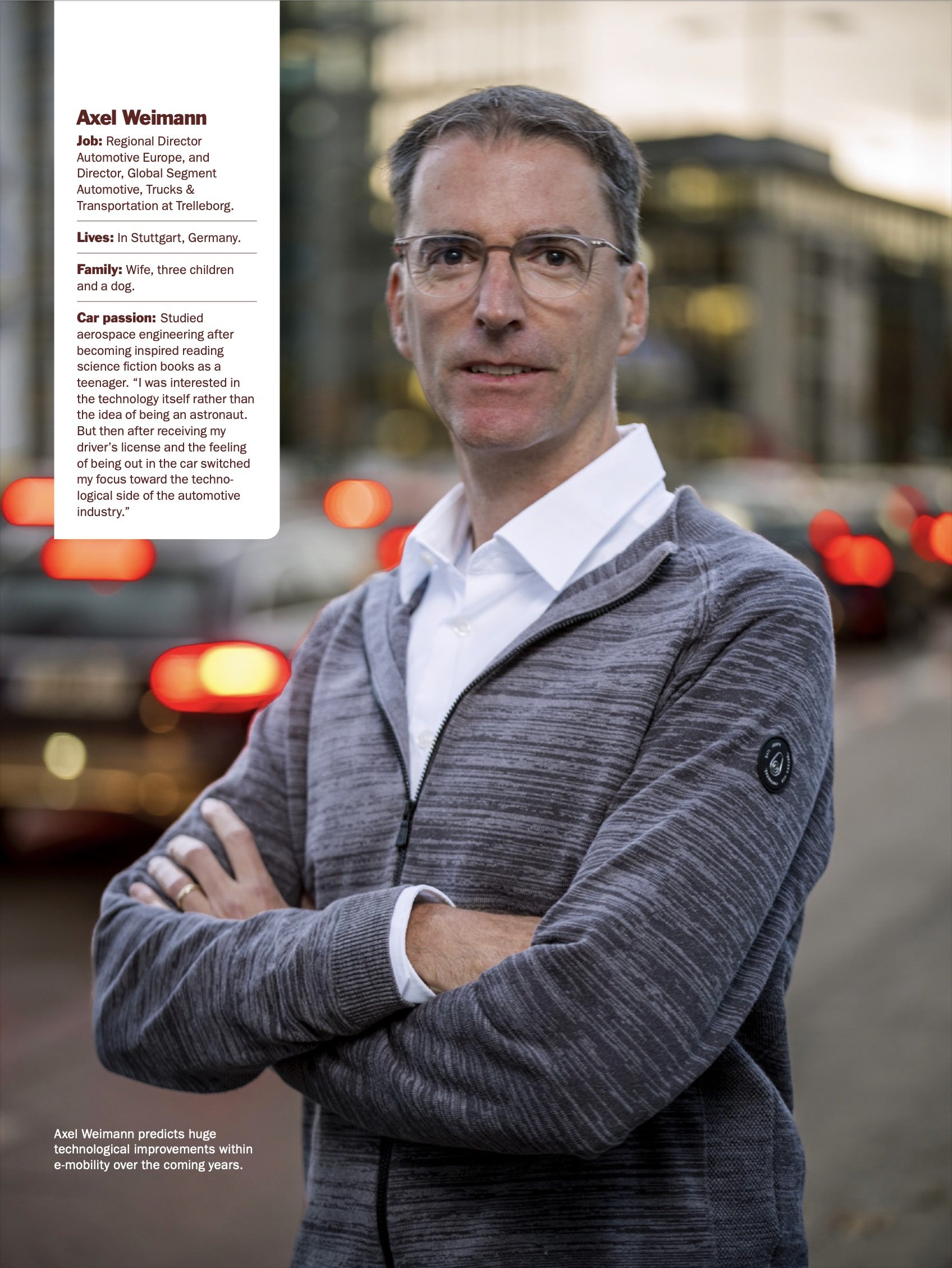
Supercharging the future
Trelleborg
The client:
Trelleborg is a world leader in engineered polymer solutions that seal, damp and protect critical applications in demanding environments.
The task:
Sales of electric vehicles are rising quickly, but could the industry become a victim of its own success?
Patrick Gower speaks to Trelleborg’s e-mobility expert Axel Weimann about superchargers, hydrogen trucks and why he is selling his combustion engine car to go all-electric.
Kent Nordic was appointed to work with Trelleborg by Stockholm-based content agency Appelberg. T-Time is Trelleborg’s stakeholder magazine where you can meet Trelleborg experts, read about technological developments and take deeper dives into emerging trends. The magazine is available in eight languages.
The role:
Content writing
Growing pains
Pick any data point and the growth of electric cars looks like a wildly successful phenomenon. The number of electric cars on the world’s roads hit 16.5 million at the end of 2021, according to the International Energy Agency (IEA). That is triple the number in 2018. Two million electric cars were sold in the first quarter of 2022 alone, three quarters more than the same period a year earlier.
Yet with such a rapid rate of growth come challenges. The price of critical minerals essential for battery manufacturing are soaring. Lithium prices, for example, were seven times higher in May 2022 than they were at the beginning of 2022.
The expansion of charging infrastructure in many locations has failed to keep up with the growth in electric car sales, prompting hesitancy among potential buyers. Anxiety over the range of electric vehicles regularly crops up in consumer surveys, despite the industry’s best efforts to publicize how this has extended.
“People who are yet to experience owning an electric vehicle naturally see potential obstacles, not the solutions,” says Axel Weimann, whose passion and work is the future of automotive. “That concern is going to be blown away by some of the technological improvements we’re going to see over the coming years.”
Weimann is Trelleborg’s e-mobility expert and would be what is considered an early adopter. He purchased his first electric vehicle, a Nissan Leaf, in 2015 — back when global electric vehicle (EV) sales were running at a little over half a million a year. The average electric car had a range of about 100 kilometers in winter, about a third of that of modern comparable electric cars. “It was great as a second car,” he says. Weimann replaced the Nissan with a Renault Zoe when it was time to upgrade, another EV with greater efficiency and a longer range.
However, for many would-be buyers, questions over range and efficiency are only part of the picture. They focus on more mundane issues, such as where to charge an EV when living in an apartment block. That, according to Weimann, is becoming a redundant question. Employers across Europe are investing in charging infrastructure and gas stations are pivoting with installations of superchargers that can fuel 250 kilometers of range in just 25 minutes.




